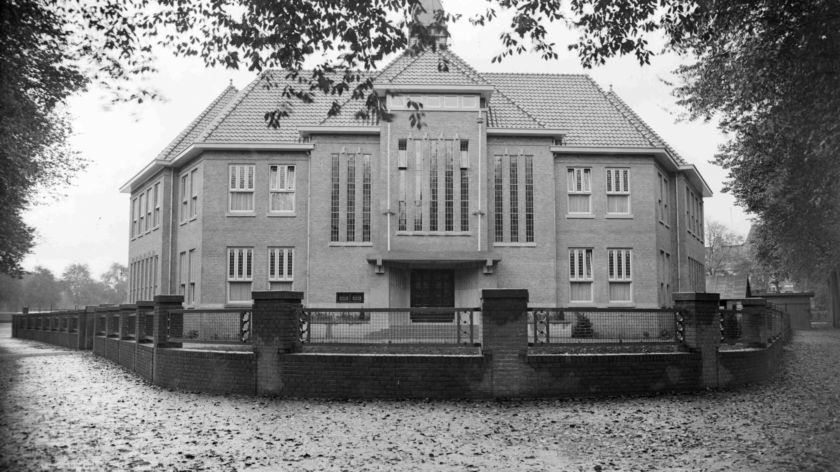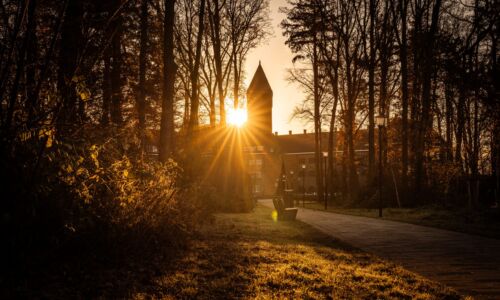Then & Now (6): the auditorium in 1935
-
 Photo: regionaal archief Nijmegen.
Photo: regionaal archief Nijmegen.
In the olden days the university didn’t have a campus, and its buildings were spread all over town. To commemorate Radboud University’s 95th anniversary, VOX hit the archives. What’s changed? What's changed? Today: the old auditorium.
At the end of the Second World War, Nijmegen was in ruins. The university was hit hard as well. The only university building that made it through the war unscathed was the auditorium on Wilhelminasingel. Underappreciated before the war, the building started to play a significant role within the university after 1945.
Unique opportunity
The auditorium’s location on Wedren square was not exactly planned. Only after the site was purchased by the Radboud foundation in October 1928 were plans drafted for its use. The foundation purchased the site because it presented a unique opportunity. Unfortunately, it was not a suitable location for a new library as it was too expensive. Renovating the buildings on Snijderstraat and Muchterstraat was a much more affordable option, but the foundation did manage to allocate the necessary funds to build an auditorium on Wedren square. Haarlem architect M.H.W.J. van Ooijen was appointed to design the building. He presented his first design in 1929, describing the building as “a large house.”
The building committee did not approve the design, as the building would be tucked away in a south-western corner of the site. The auditorium was to become the university’s calling card. That calling card, however, could only cost 115,000 guilders. Given this tight budget, four more of Van Ooijen’s designs were rejected. The committee ended up choosing the initial design, with the auditorium located in the north-western corner. They argued that this would leave more space on Julianaplein square for a large university building in the future.
‘A plastered piss pot’
The building plans were published in June 1930 and were met with scathing critique. The journal Bouwblad described it as “the disaster of Nijmegen.” Henri Bruning, a fascist and a critic of Catholicism, described Van Ooijen’s design as a “plastered piss pot” in the monthly journal Roeping. He hoped “an earthquake would obliterate the building as soon as it rose from the earth.” Professors, prompted by Rector Magnificus Engelbert Drerup, also expressed their public disdain for the building. As a result, the building was opened with very little fanfare in October 1931.
The building had a large auditorium with room for 350 people, a reception area and a lobby, a professors’ room and three lecture halls. Photos and portraits lent the building a decidedly Catholic character. There was no central heating in the early days because the auditorium was not expected to be used often. Only after the Second World War were the gas stoves replaced.
Main building
Before the Second World War, the auditorium was only used for anniversary celebrations, PhD conferrals and other official ceremonies. This changed after the war, as the other university building had been destroyed. The auditorium suddenly played an important role, given the acute need for alternative accommodation. It soon served as the university’s main building. The curators, the senate and the statue of Thomas van Aquino were all relocated to Wedren square and students attended lectures in the auditorium. A quarter of a century later, the building became the site of large-scale student protests. The auditorium on Wilhelminasingel continued to play an important role as a university building until 1988, when a new auditorium was built on Heyendaal. It currently houses a secondary school.
With thanks to Jan Brabers, university historian. Marjolein van Diejen took the ‘now’ photo. ‘Then’ photo: Nijmegen Regional Archive
Sources: Rob Wolf, De Trek naar het zuiden: gebouwen van de Katholieke Universiteit Nijmegen 1923-1998 (Nijmegen, 1998) and Huis van de Nijmeegse Geschiedenis.



